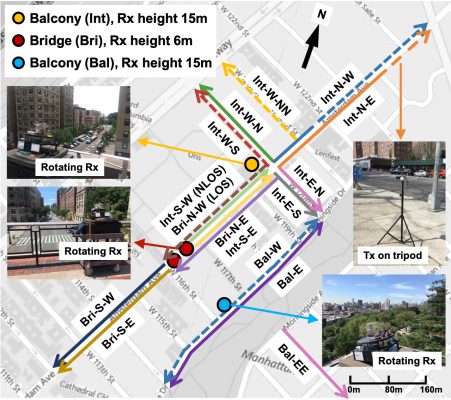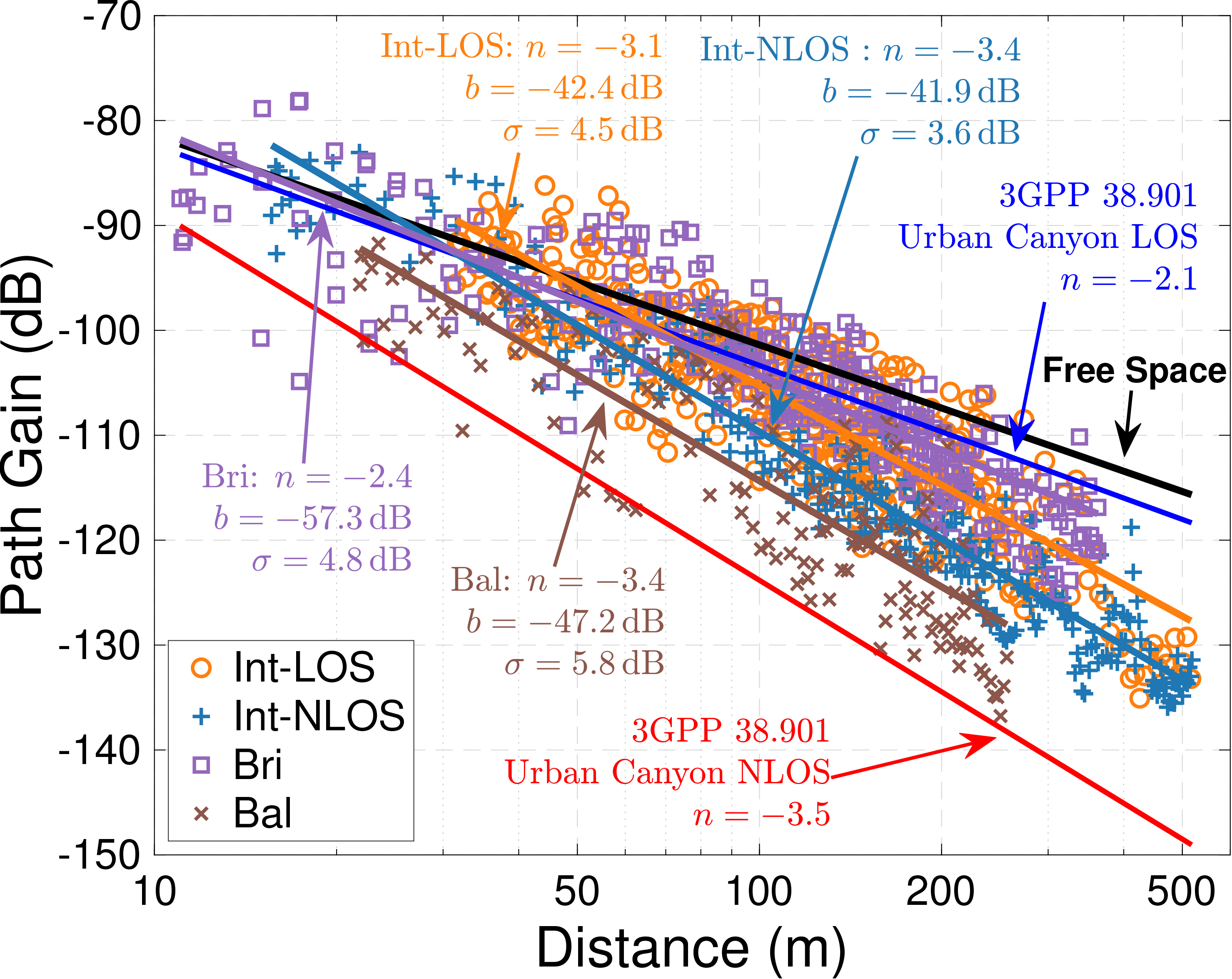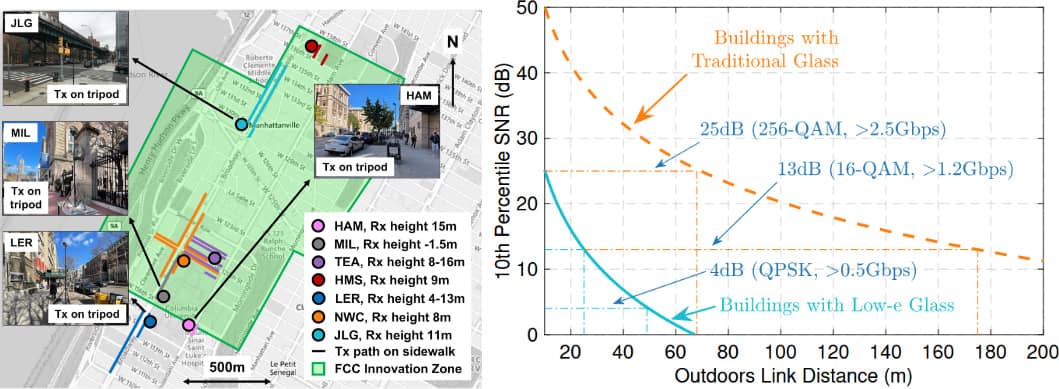(Left) Map of measurement campaign. The channel sounder receiver (Rx) was placed in the seven marked buildings and the mmWave transmitter (Tx) moved along the marked paths, for a total of 40 scenarios. (Right) signal-to-noise ratio (SNR) against Tx-Rx distance for buildings with traditional glass (like HGMS) and buildings with Low-e glass, typically used in modern building construction. Traditional glass is significantly less lossy, leading to higher SNR and data rates in excess of 2.5 Gbps.
[4] T. Chen, M. Kohli, T. Dai, A. D. Estigarribia, D. Chizhik, J. Du, R. Feick, R. Valenzuela, and G. Zussman, “28GHz channel measurements in the COSMOS testbed deployment area,” in Proc. ACM MobiCom’19 Workshop on Millimeter-Wave Networks and Sensing Systems (mmNets), 2019. [download] [presentation]
[5] J. Du, D. Chizhik, R. Valenzuela, R. Feick, G. Castro, M. Rodriguez, T. Chen, M. Kohli, and G. Zussman, “Directional measurements in urban street canyons from macro rooftop sites at 28 GHz for 90% outdoor coverage,” IEEE Transactions on Antenna and Propagation, vol. 69, no. 6, pp. 3459–3469, June 2021. [download]
[6] M. Kohli, A. Adhikari, G. Avci, S. Brent, A. Dash, J. Moser, S. Hossain, I. Kadota, C. Garland, S. Mukherjee, R. Feick, D. Chizhik, J. Du, R. Valenzuela, and G. Zussman, “Outdoor-to-indoor 28 GHz wireless measurements in manhattan: Path loss, environmental effects, and 90% coverage,” arXiv:2205.09436 [eess.SP], May 2022. [
download]
[7] M. Kohli, A. Adhikari, G. Avci, S. Brent, J. Moser, S. Hossain, A. Dash, I. Kadota, R. Feick, D. Chizhik, J. Du, R. Valenzuela, and G. Zussman, “Outdoor-to-Indoor 28GHz Wireless Measurements in Manhattan: Path Loss, Location Impacts, and 90% Coverage,” in
Proc. ACM MOBIHOC’22, Oct. 2022. [
download] [
dataset (NIST)] [
dataset (local)] [
presentation]
[8] D. Chizhik, J. Du, M. Kohli, A. Adhikari, R. Feick, R. Valenzuela, and G. Zussman, “Accurate urban path loss models including diffuse scatter,” in Proc. 17th European Conf. on Antennas and Propagation (EuCAP’23) (to appear), Mar. 2023. [download]








